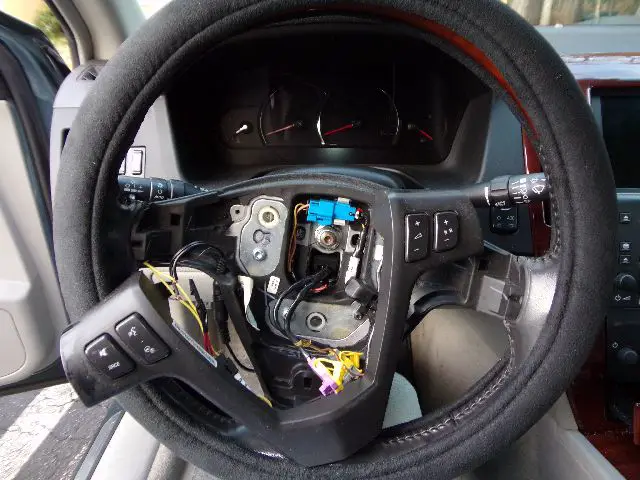Radiator fans are crucial in maintaining your vehicle’s engine temperature and preventing overheating. In this comprehensive guide, we’ll explore the various aspects of radiator fans, from their functions and signs of failure to replacement costs and troubleshooting tips. Let’s dive in.
What does a Radiator Fan do?

A radiator fan, often called a cooling fan, is an essential component of your vehicle’s cooling system. Its primary function is to dissipate heat generated by the engine. When your car’s engine runs, it produces a significant amount of heat, and the radiator fan helps regulate the temperature by drawing air through the radiator, which, in turn, cools the coolant. This process ensures that your engine operates within the optimal temperature range, preventing overheating.
How do you know if your Radiator Fan is bad?

Recognizing the signs of a malfunctioning radiator fan is essential for preventing potential engine damage caused by overheating. Here are some common indicators that your radiator fan may be failing:
Engine Overheating
An engine that consistently runs hotter than its average operating temperature is one of the most noticeable signs of a bad radiator fan. Observing the temperature gauge steadily climbing into the red zone strongly indicates that your radiator fan might not be functioning correctly. An overheating engine can lead to severe damage and should be addressed promptly.
Air Conditioning Issues
When you use air conditioning in your vehicle, the radiator fan should increase speed to help cool the AC condenser. If you experience a noticeable drop in AC performance when the fan fails to activate, this is a significant warning sign. Inadequate cooling can strain the AC system and impact your comfort during hot weather.
Unusual Engine Noise
A failing radiator fan may produce unusual noises while operating. Listen for sounds like grinding or squealing, as these can indicate mechanical problems within the fan motor or blades. Any unusual noises should be investigated promptly to prevent further damage.
Frequent Coolant Leaks
If you frequently need to top up your coolant reservoir, it could result from a malfunctioning radiator fan. When the fan doesn’t effectively cool the engine, excessive heat can cause coolant to evaporate or leak. This leads to potential engine overheating and poses a risk to your vehicle’s overall performance and reliability.
Recognizing these warning signs and addressing them promptly is crucial for the health and longevity of your vehicle’s engine. If you suspect that your radiator fan is not functioning correctly, it’s advisable to consult a professional mechanic to diagnose and resolve the issue.
Important: Spark Plug Socket Handbook
What causes a Radiator Fan to stop working?

A radiator fan is a critical component in your vehicle’s cooling system, and understanding the potential reasons behind its failure is crucial for efficient troubleshooting. Several factors can contribute to a radiator fan ceasing to function correctly, including:
Electrical Problems
One common cause of radiator fan failure is electrical issues within the system. Damaged wiring, blown fuses, or a malfunctioning radiator fan relay can all disrupt the fan’s operation. When the electrical components that power the fan are compromised, it can lead to erratic fan behavior or complete inactivity.
Motor Failure
Over time, the fan motor can experience wear and tear, ultimately resulting in motor failure. This may manifest as the fan struggling to turn or not turning at all. Motor failure can stem from prolonged usage, exposure to extreme temperatures, or the passage of time.
Temperature Sensor Issues
The temperature sensor is pivotal in regulating the radiator fan’s operation. It sends signals to the fan, instructing it when to turn on and off based on the engine’s temperature. If the temperature sensor is faulty or sends inaccurate signals, the radiator fan may not receive the necessary commands, leading to improper cooling.
Identifying the specific cause of your radiator fan’s malfunction is essential for an effective resolution. Whether electrical problems, motor failure, or temperature sensor issues, prompt diagnosis and repair are vital to ensure your vehicle’s engine remains at an optimal temperature and operates smoothly.
Can I drive my car if the Radiator Fan is not working?
Driving a vehicle with a malfunctioning radiator fan poses considerable risks, particularly in adverse conditions like hot weather or heavy traffic. The radiator fan is an indispensable component of your vehicle’s cooling system, responsible for regulating the engine’s temperature. When it fails to function correctly, your engine becomes vulnerable to overheating, resulting in substantial repair expenses or, in extreme cases, irreversible engine damage.
Taking immediate action when you suspect a problem with your radiator fan is strongly recommended. Continuously operating your vehicle without proper cooling can exacerbate the issue, potentially leading to more significant damage. To mitigate these risks, it is wise to refrain from driving long distances or in challenging conditions until the radiator fan is professionally repaired or replaced.
In essence, driving with a malfunctioning radiator fan is a gamble that can result in costly consequences. To safeguard your vehicle’s engine and ensure your safety on the road, prioritize addressing the issue promptly by seeking the expertise of a qualified mechanic.
Also Read: Radiator Hoses
What’s the difference between a Radiator Fan and a Cooling Fan?
The terms “radiator fan” and “cooling fan” are often used interchangeably in discussions related to a vehicle’s cooling system. However, it’s essential to recognize that both names refer to a single component crucial in regulating engine temperature. In this breakdown, we will delve into the subtle nuances and common usage of these terms within the context of automotive cooling.
Common Usage and Interchangeability
One of the key points to understand is that “radiator fan” and “cooling fan” are synonymous for all practical purposes. These terms describe the same device responsible for the fundamental task of cooling the radiator, which, in turn, facilitates the regulation of the engine’s temperature. This cooling process is integral to preventing engine overheating and subsequent damage.
The Fan’s Essential Role
The primary function remains consistent whether you refer to it as a radiator fan or a cooling fan. This critical component draws air through the radiator, allowing the coolant circulating through the engine to dissipate excess heat. By maintaining the engine within the optimal temperature range, the fan plays a pivotal role in ensuring the engine’s efficient and safe operation.
Radiator Fan Replacement Cost: What to Expect
When replacing a radiator fan in your vehicle, understanding the associated costs is essential for budgeting and decision-making. The expense of this replacement can fluctuate significantly depending on several factors, primarily your vehicle’s make and model, coupled with the labor rates in your geographical area. Here’s a detailed breakdown of what you should anticipate.
Vehicle Make and Model
The make and model of your vehicle are primary determinants of the replacement cost. Different vehicles have varying levels of complexity in their cooling systems, which can influence the cost of parts and labor. High-end or specialized vehicles might require specific radiator fans, which can be more expensive than generic ones.
Labor Costs
Labor charges can differ substantially based on where you live and the auto repair shop you choose. In metropolitan areas or regions with a higher cost of living, labor rates are typically higher. Additionally, the complexity of the installation can also impact labor costs. If the replacement requires more time and effort due to the fan’s location or other factors, it can increase the overall expense.
Type of Fan
Radiator fans come in various types, including mechanical and electric. Electric fans are more common in modern vehicles due to their efficiency and control. The type of fan you need will affect the cost, with electric fans being slightly more expensive.
Additional Parts
Depending on the condition of your cooling system, other components may require replacement or adjustment alongside the radiator fan. This can include hoses, belts, or even the radiator itself. The replacement cost may increase if these additional parts are included.
On average, a radiator fan replacement typically costs $100 to $400 for both parts and labor. However, it’s crucial to remember that this is a general estimate. For a precise cost, obtaining quotes from local auto repair shops is advisable, considering the specifics of your vehicle and the necessary repairs. The cost may exceed the average range if your car has a unique cooling system or specialized components. Being informed about these potential variables can help you make an accurate budget for your radiator fan replacement.
Radiator Fan Relay
The radiator fan relay is an electrical component that controls the fan’s operation. If this relay fails, it can prevent the fan from turning on when needed. Replacing a radiator fan relay is relatively affordable, typically costing between $20 and $50 for the part.
Radiator Fan Keeps Running When the Car is Off
If your radiator fan continues to run even after the engine is turned off, it may indicate a malfunctioning temperature sensor or a wiring issue. This situation can drain your car’s battery, so it’s crucial to address it promptly.
Should the Radiator Fan Turn On When the AC is On?
The radiator fan should also activate when you turn on your car’s AC. This additional cooling helps maintain proper AC performance and prevents the engine from overheating during AC operation.
How to Make the Radiator Fan Turn On?
If your radiator fan isn’t functioning as it should, you can try a few troubleshooting steps:
- Check the fan fuse and relay.
- Inspect the wiring for damage.
- Test the fan motor for continuity.
- Verify that the temperature sensor is functioning correctly.
How to Test a Radiator Fan
Assessing the performance of your radiator fan is a relatively uncomplicated procedure. You can determine whether your fan is operating correctly by following these steps. Here’s a step-by-step guide:
-
Safety First
Before you begin, ensure that your vehicle’s engine is turned off and has had sufficient time to cool down. Working around a hot engine can be dangerous, so exercise caution.
-
Locate the Fan Electrical Connectors
Identify the electrical connectors associated with your radiator fan. These connectors are typically found near the fan, often attached to the fan shroud or the fan housing.
-
Use a Multimeter
Equip yourself with a multimeter, a handy tool for measuring electrical voltage. Set the multimeter to the voltage setting.
-
Start the Engine
Start your vehicle’s engine and allow it to run until it reaches a normal operating temperature. The fan should activate automatically as the engine heats up.
-
Testing the Voltage
Carefully probe the electrical connectors using the multimeter’s leads while the engine runs, and the fan should be on. If the multimeter registers voltage at the connectors, this indicates that power is reaching the fan, which is a positive sign.
-
Observing Fan Operation
Keep a close eye on the radiator fan as you perform this test. If voltage is present, but the fan fails to spin or function correctly, it strongly indicates that the fan motor is defective and requires replacement.
Testing your radiator fan in this manner can help you quickly pinpoint any issues with its functionality. Suppose you discover that the fan is not operating correctly despite receiving power. In that case, it’s advisable to consult a professional mechanic for a thorough diagnosis and potential fan motor replacement.
How Long Should the Radiator Fan Stay On?
The duration the radiator fan stays on varies depending on the engine’s temperature and the vehicle’s design. The fan will usually run until the engine cools to a safe operating temperature. This can range from a few minutes to several minutes after you turn off the engine.
When Does the Radiator Fan Turn On?
The radiator fan typically turns on when the engine reaches a certain temperature threshold, as monitored by the temperature sensor. It may also activate when the AC is running to assist in cooling the condenser.
Radiator Fan Not Working When AC is On: reason & solution!
If your radiator fan doesn’t activate when the AC is on, it could indicate a problem with the fan motor, relay, or temperature sensor. Diagnosing and addressing the issue promptly is essential to prevent engine overheating and AC performance problems.
Conclusion
A well-functioning radiator fan is essential to keep your engine cool and prevent costly repairs. If you suspect any issues with your radiator fan, it’s advisable to consult a professional mechanic to diagnose and resolve the problem promptly. Regular maintenance and prompt attention to any fan-related problems will help ensure your vehicle’s engine stays in optimal condition.




